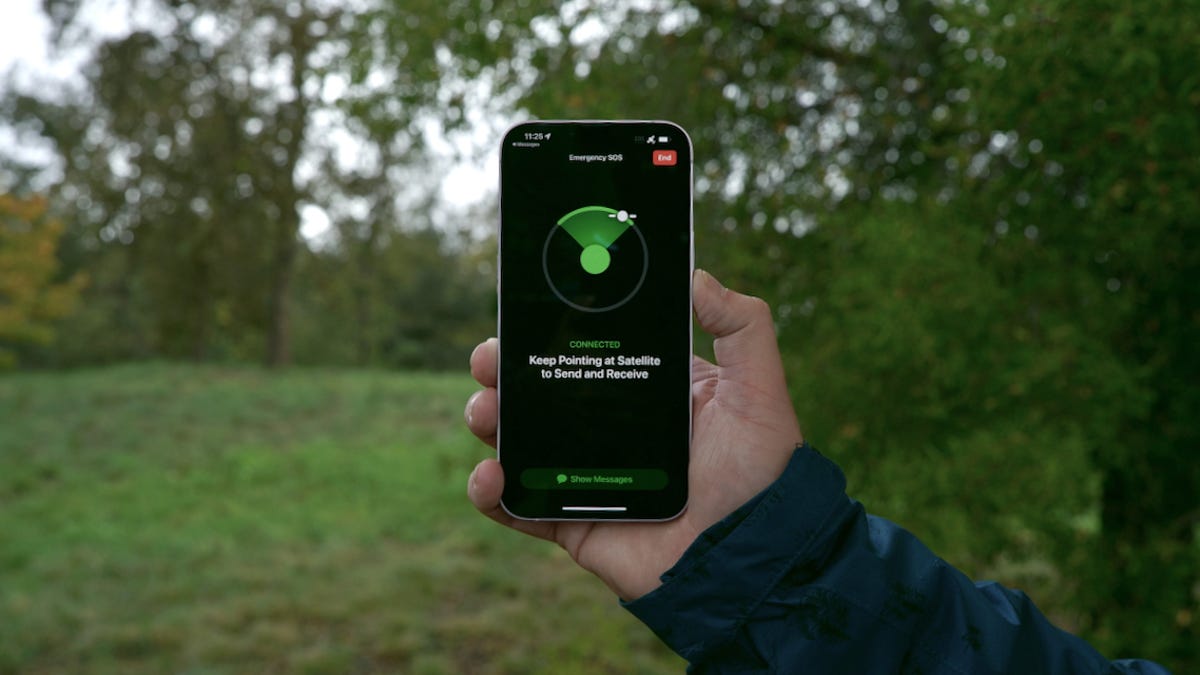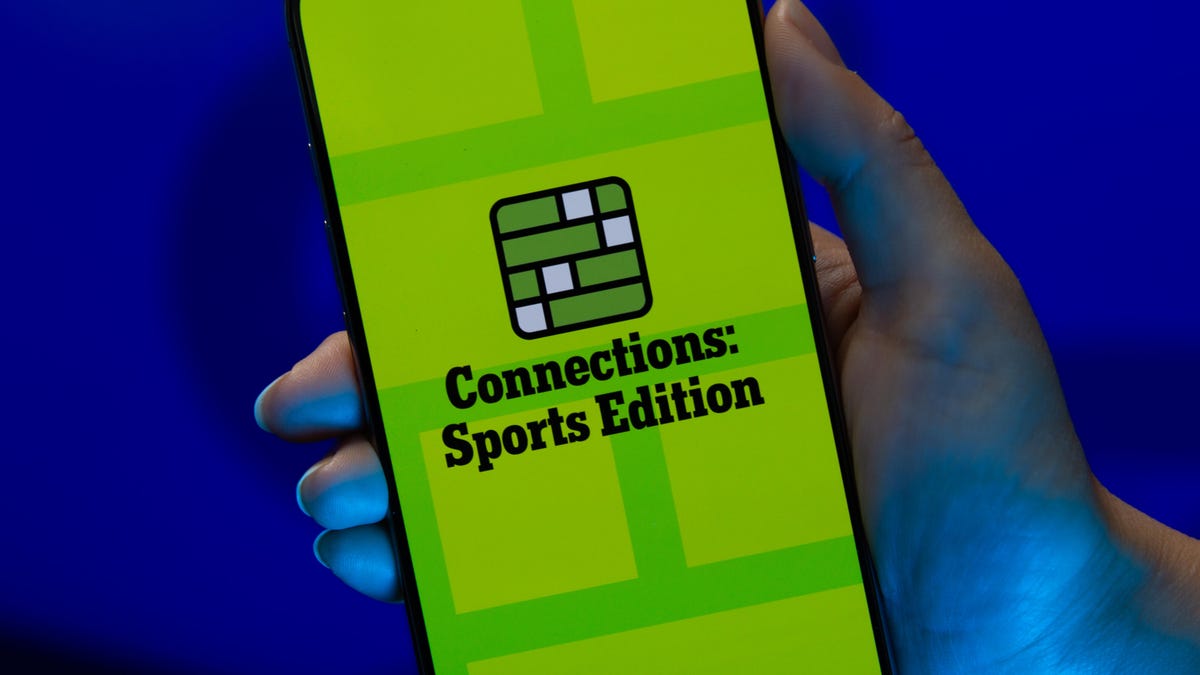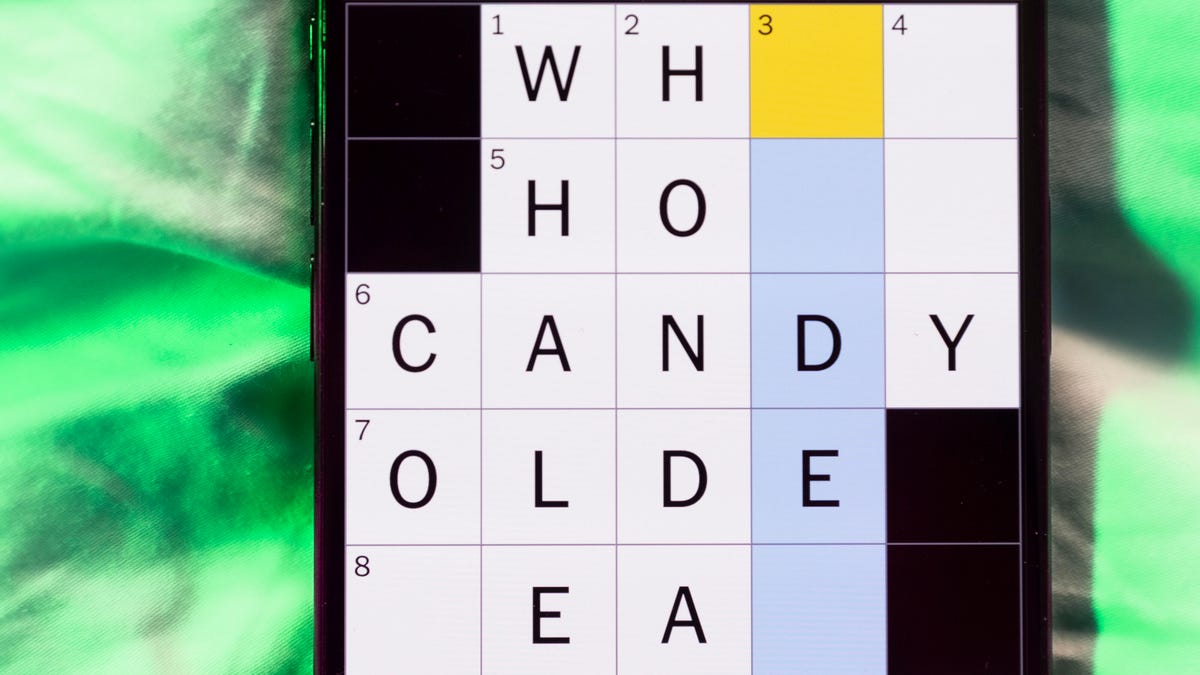Technologies
iPhone 14 Sets the Stage for 2023’s Biggest Phone Trend
Everyone’s jumping on the idea of texting through orbiting satellites, but is it just a fad?

The next time you find yourself needing to send a text while stuck in the middle of nowhere, you may be able to look to the sky, where low-Earth satellites can help send an SOS, no matter what device you have.
Last year, Apple became the first tech company to offer new satellite texting capabilities to its devices, introducing it with the iPhone 14 as a system to call for help in emergencies. The idea is easy enough: Point your phone at the sky, line it up with a satellite passing overhead and send a text to authorities. You can even send GPS data too.
Now, other companies are poised to jump on board, making satellite texting a new frontier for the phone world.
«I think 2023 is certainly shaping up to be the year of mobile satellite connectivity,» said Avi Greengart, an analyst at research firm Techsponential. «Everyone’s doing it. Everyone is doing it differently.»
Sadly, it’s not as easy as adding a satellite texting app and an extra satellite radio to the phone. Low Earth-orbiting satellite systems cost money to run and maintain, just like cellular internet and phone systems do. Apple has said it’ll give iPhone owners free access to emergency services for two years after they buy their device, but it hasn’t said what happens after. Other satellite texting systems haven’t launched yet and seem likely to charge users for the privilege.
There’s no debate about whether this technology can be useful. We’ve already heard stories of people’s lives being saved because of it. The question is whether people are willing to pay for it. And if not, will satellite texting be just another fad, like 3D TV?
Currently, satellite tech on our phones is only for emergencies and only in expensive smartphones like Apple’s iPhone 14, which starts at $799. That makes the technology a nice-to-have feature that the broader population of phone owners won’t have access to for some time. Those that do may never end up in a dire situation without signal when the feature would come in handy — a group that IDC research director Nabila Popal counts herself among. «I can’t remember the last time I didn’t have cell service,» Popal said.
Given satellite texting’s niche use, Popal doesn’t believe having it will sway consumers into buying one phone over another. It will certainly appeal to backcountry hikers, desert drag racers and remote truckers who plan to head beyond cell networks. But, for everyone else, it’s not an important enough feature to rush out to buy.
Instead, it’s more like one more feather in the cap of modern smartphones, which have already bundled together so many other technologies we used to have to carry separately in our bags, like cameras and handheld video games.
The current state of satellite texting
Satellite phones have been around for decades, showing up in films as far back as Steven Seagal’s 1992 classic military thriller Under Siege whenever someone needs to make calls from the middle of the ocean. A satellite phone also played a critical role in getting people off dinosaur-infested island in 2001’s Jurassic Park III.
«Where’s the phone? Get the phone!» yells veteran dino survivor Alan Grant as it nearly slides off a boat and into a river during a Spinosaurus attack. (Spoilers, he grabs it at the last minute and is able to signal for help.)
The real-life versions aren’t as exciting, but they can be just as helpful. They use networks of dozens of satellites orbiting the Earth every 90 minutes or so to relay phone signals to the ground. The first of these systems was Iridium, which launched its service in 1998 and a dozen other satellite networks have survived by offering connectivity to frequent travelers, but the prospect became popular recently after Elon Musk’s rocket startup SpaceX borrowed the idea to surround the globe with internet coverage through its Starlink program.
You can still get satellite phone coverage by purchasing a bulky, nearly $900 feature phone and paying a premium of at least $50 for 5 minutes of call time for service from companies that own a private network of satellites. But phone makers are building in the capability to use those orbital networks to send emergency texts because smartphone radios have gotten good enough to communicate with satellites directly, instead of relying on a separate — and often large — antenna.
Phone radios have «gotten so good now that you can build satellite connectivity into a phone without needing an external antenna,» said Anshel Sag, an analyst at Moor Insights & Strategy.
Among mainstream smartphone makers, Apple was the first with its iPhone 14 line. The company partnered with GlobalStar, which has limited coverage of the US, Europe, Australia and limited parts of South America. Apple only activates this feature in a handful of countries in those continents, and it only works for emergency text messages made outside (it won’t reach deep within buildings), but the company pledged that new iPhone 14 owners get two years of service included when they buy the phone.
Earlier this month, Qualcomm revealed a new feature coming in Android phones that will let users send and receive text messages through satellites. It uses the Iridium network and Qualcomm says it will have global coverage, which is more than Apple’s services says.
The service, called Snapdragon Satellite, will only be for emergencies to start but will eventually be able to exchange messages socially and even use data, likely as part of a premium service. It’s not available yet and will come in phones launching in the second half of 2023 that use Qualcomm’s latest premium chips, though the company is leaving it up to phonemakers whether to have the service at all in their phones or if they should charge for the privilege. That leaves lots of unknowns.
And there are smaller players with their own niche devices, like Bullitt, which announced its Motorola-branded rugged phone powered by a MediaTek chipset at CES 2023 that will launch in the first quarter of 2023 for an undisclosed price tag. Bullitt promises two-way satellite texting through connectivity partner Skylo, which leases time on existing satellite constellations. Huawei actually launched its Mate 50 series of phones with satellite texting through China’s BeiDou satellite network a day ahead of Apple’s iPhone 14 debuted, though Huawei’s reach has diminished over the years.
More individual phones coming out with their own ideas of satellite texting will likely follow, and the big US carriers have all selected their own satellite partners to eventually offer mobile service beyond their networks’ edges, though none has a firm launch date yet.
Everyone’s in on the race because they can see the potential value of providing satellite safety nets as a service, analysts say. Apple could easily add it alongside its subscription services, like the $7 per month Apple TV Plus, $10 per month Apple Music Plus or $17 Apple One bundle. Carriers could use it to sweeten the deal for the priciest subscription plans, betting that the risk-averse among us are willing to pay extra for peace of mind. «It’s hard to overstate how important telling someone you’re out of gas in the middle of the Gobi Desert or Death Valley or the Adirondacks is,» Techsponential’s Greengart said.
Is it a bad thing to be the new phone trend?
Of course, the phone industry doesn’t have the best track record with new technologies. Analysts broadly consider the last couple years of transition to 5G wireless to have been a letdown, particularly because coverage has been spotty and speeds are sometimes as slow as the 4G LTE service we’ve had for years.
Satellite texting could be even more finicky than 5G was, particularly because it depends on the availability of satellites and the yet-untested strain of having many people relaying help requests through them.
Still, early signs seem promising. At CES 2023, Qualcomm took journalists outside Las Vegas to test its Snapdragon Satellite feature, and it worked. CNET phone editor Patrick Holland tested Apple’s Emergency SOS feature on his iPhone 14 and found that it worked — in fact, anyone can try it out without sending an emergency message thanks to a demo mode in the phone’s settings.
This seems like the next frontier — to use satellites to bolster mobile networks and keep people in contact. Even if most people will never have the misfortune to need it, the feature still acts as a safety net, helping the more adventurous phone users who wander beyond cell towers or disaster survivors after mobile networks fail.
Some iPhone 14 owners have reportedly been saved already thanks to the feature, including one man stranded when traveling by snow machine in Alaska above the Arctic Circle. In another case, a couple tumbled down into a deep canyon in a Los Angeles forest and used an iPhone to send for help. In less than 30 minutes, they were rescued. Without the iPhone’s satellite texting feature, emergency services wouldn’t have been contacted, and «nobody would have known to look for them,» Los Angeles County Sheriff Sgt. John Gilbert told The Los Angeles Times.
We’ve come a long way from needing to buy big, clunky satellite phones if we want to venture safely beyond the range of cell networks. Pretty soon, many smartphones will be able to call for help, whether you’ve taken a wrong turn in the wilderness or been attacked by dinosaurs on a remote island that you should have just stayed away from.
Technologies
Black Friday Is Wrapped but Apple’s Biggest Price Drops Haven’t – Grab Them Before They’re Gone
Technologies
Today’s NYT Connections: Sports Edition Hints and Answers for Nov. 29, #432
Here are hints and the answers for the NYT Connections: Sports Edition puzzle for Nov. 29, No. 432.

Looking for the most recent regular Connections answers? Click here for today’s Connections hints, as well as our daily answers and hints for The New York Times Mini Crossword, Wordle and Strands puzzles.
It’s Rivalry Saturday, so Connections: Sports Edition gives a big game a nod with two caregories. If you’re struggling with today’s puzzle but still want to solve it, read on for hints and the answers.
Connections: Sports Edition is published by The Athletic, the subscription-based sports journalism site owned by The Times. It doesn’t appear in the NYT Games app, but it does in The Athletic’s own app. Or you can play it for free online.
Read more: NYT Connections: Sports Edition Puzzle Comes Out of Beta
Hints for today’s Connections: Sports Edition groups
Here are four hints for the groupings in today’s Connections: Sports Edition puzzle, ranked from the easiest yellow group to the tough (and sometimes bizarre) purple group.
Yellow group hint: Fire it on in there.
Green group hint: Buckeyes.
Blue group hint: Wolverines.
Purple group hint: Not double.
Answers for today’s Connections: Sports Edition groups
Yellow group: Baseball pitching feats.
Green group: Associated with Ohio State.
Blue group: Associated with Michigan.
Purple group: Triple ____.
Read more: Wordle Cheat Sheet: Here Are the Most Popular Letters Used in English Words
What are today’s Connections: Sports Edition answers?
The yellow words in today’s Connections
The theme is baseball pitching feats. The four answers are immaculate inning, no-hitter, perfect game and shutout.
The green words in today’s Connections
The theme is associated with Ohio State. The four answers are dotting the I, gray, scarlet and The Horseshoe.
The blue words in today’s Connections
The theme is associated with Michigan. The four answers are blue, Hail to the Victors, maize and The Big House.
The purple words in today’s Connections
The theme is triple ____. The four answers are A, crown, double and play.
Technologies
Today’s NYT Mini Crossword Answers for Saturday, Nov. 29
Here are the answers for The New York Times Mini Crossword for Nov. 29.

Looking for the most recent Mini Crossword answer? Click here for today’s Mini Crossword hints, as well as our daily answers and hints for The New York Times Wordle, Strands, Connections and Connections: Sports Edition puzzles.
Need some help with today’s Mini Crossword? It’s Saturday, so it’s a long one. Read on for all the answers. And if you could use some hints and guidance for daily solving, check out our Mini Crossword tips.
If you’re looking for today’s Wordle, Connections, Connections: Sports Edition and Strands answers, you can visit CNET’s NYT puzzle hints page.
Read more: Tips and Tricks for Solving The New York Times Mini Crossword
Let’s get to those Mini Crossword clues and answers.
Mini across clues and answers
1A clue: Hockey disks
Answer: PUCKS
6A clue: Signature headwear for Mr. Monopoly
Answer: TOPHAT
7A clue: Seedy establishment?
Answer: NURSERY
8A clue: Bioweapon at the center of a 2001 envelope scare
Answer: ANTHRAX
9A clue: Cleverly skillful
Answer: ADROIT
10A clue: Sleeping enclosure for a pet dog
Answer: CRATE
11A clue: Picks up the tab
Answer: PAYS
Mini down clues and answers
1D clue: Play, as a film character
Answer: PORTRAY
2D clue: Ultimate consequences
Answer: UPSHOTS
3D clue: Sweetheart, in French
Answer: CHERIE
4D clue: 24-___ gold
Answer: KARAT
5D clue: River in which Achilles was dipped (except for his heel!)
Answer: STYX
6D clue: Frozen landscape
Answer: TUNDRA
7D clue: Civil rights org. co-founded by W.E.B. Du Bois
Answer: NAACP
Don’t miss any of our unbiased tech content and lab-based reviews. Add CNET as a preferred Google source.
-

 Technologies3 года ago
Technologies3 года agoTech Companies Need to Be Held Accountable for Security, Experts Say
-

 Technologies3 года ago
Technologies3 года agoBest Handheld Game Console in 2023
-

 Technologies3 года ago
Technologies3 года agoTighten Up Your VR Game With the Best Head Straps for Quest 2
-

 Technologies4 года ago
Technologies4 года agoBlack Friday 2021: The best deals on TVs, headphones, kitchenware, and more
-

 Technologies4 года ago
Technologies4 года agoVerum, Wickr and Threema: next generation secured messengers
-

 Technologies4 года ago
Technologies4 года agoGoogle to require vaccinations as Silicon Valley rethinks return-to-office policies
-

 Technologies4 года ago
Technologies4 года agoOlivia Harlan Dekker for Verum Messenger
-

 Technologies4 года ago
Technologies4 года agoiPhone 13 event: How to watch Apple’s big announcement tomorrow
